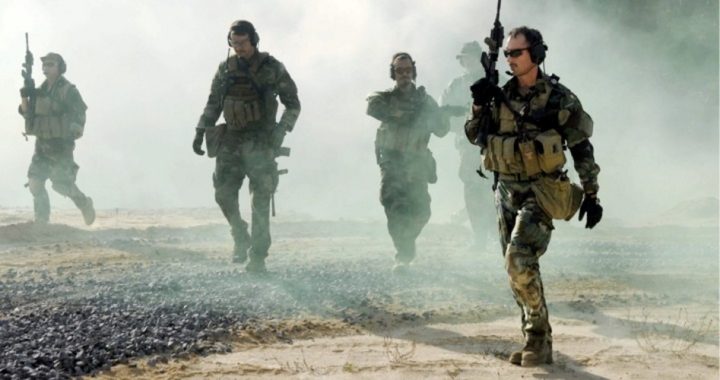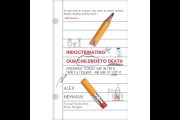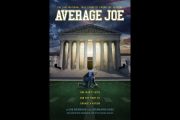
No Easy Day is more than the first primary-source story of the SEAL Team Six raid that killed Osama bin Laden; it’s a single snapshot of the culture within the Navy SEALs. That snapshot, which may or may not be representative of the whole special forces culture, demonstrates extraordinary bravery and technical and battlefield competency, as well as a lack of empathy about some of the targets that politicians had ordered the SEALs to eliminate.
The author, who goes by the pen name Mark Owen (but numerous news sources have reported his real name is Matt Bissonnette) was for about 10 years a Navy SEAL, and from 2005-2011 a member of the elite unit officially called DEVGRU (Naval Special Warfare Development Group), but best known as “SEAL Team Six.”
The book confirms much of the government story about bin Laden’s death. With the bizarre dumping of bin Laden’s body in the Indian Ocean, countless conspiracy theories emerged. Some claimed that the al-Qaeda leader had died years earlier, others that the death was a psy-ops ruse by the U.S. government and that bin Laden still lived. Americans were not permitted to hear testimony from any of the eyewitnesses, other than bin Laden’s widow. And eyewitness testimony is often powerful evidence. Even No Easy Day will not quell the skepticism of every conspiracy theorist, but it does provide powerful eyewitness evidence that the government story is essentially true (the author differs on some minor details with the Pentagon version).
Regarding the heroism and bravery of SEALs, the author provides striking examples, of which the bin Laden raid is one. In the 2009 Maersk Alabama mission against Somalian pirates, the author served in a back-up capacity for SEALs rescuing the ship’s captain, Richard Phillips. Navy SEALs shot three pirates and took a fourth one prisoner as they freed Phillips. Of the Somalia rescue, the author said, “It felt good to finally save a life instead of just taking guys out.” But he also complained of the delay in Washington to make the call to rescue hostage Captain Richard Phillips. His unit commander, “Phil,” said, “Dude, it’s Washington. Does anything make sense?” This was something to which the author agreed: “We got a glimpse of the Washington machine and just how slow the decision-making could be.”
With the advent of the Obama administration (which the author doesn’t blame by name), the author complains about new bureaucracy in getting military assaults approved in Afghanistan and Iraq: “With every rotation we had new requirements or restrictions. It took pages of PowerPoint slides to get a mission approved. Lawyers and staff officers pored over the details on each page, making sure our plan was acceptable to the Afghan government…. On the last deployment, we were slapped with a new requirement to call them out. After surrounding a building, an interpreter had to get on a bullhorn and yell for the fighters to come out with their hands raised. It was similar to what police did in the United States.” Acting like police, not shooting first, was bad form in the author’s eyes. So was a government too slow to call for lethal military raids. Moreover, the local Afghan and Iraqi governments would often let prisoners go. “If we found guns, we arrested the fighters, only to see them go free a few months later. Often we recaptured the same guy multiple times during a single deployment.”
Such a sentiment was understandable as the United States sought to eliminate the main al-Qaeda staging ground of the September 11 attacks in Afghanistan. But in Iraq, the United States had become the aggressor and foreign invader in a nation that had no al-Qaeda presence and whose government was an enemy of al-Qaeda.
The author goes on to chronicle one deployment in Al Anbar province in Iraq where he took one rebel-allied soldier alive because the Iraqi had put his gun down. All the rules required him to take the prisoner alive, from Christian just-war theory and the Geneva Convention (both unmentioned in the book) to the U.S. military rules of engagement. But the author wanted to kill the Iraqi in cold blood: “Everything inside me wanted to shoot this guy right there on the spot. He knew the rules we had to follow and he was using them against us. We couldn’t shoot him unless he posed a threat.” The murderous impulses may simply have been a result of the heat of the battlefield, or that the Iraqi soldier could — and if released in the future, would — shoot at the author’s buddies. Nonetheless, the author did eventually follow the Navy’s rules of engagement and take the Iraqi fighter prisoner. But nothing in the book reveals any understanding by the author or conversation by his friends that Iraqi militia fighters were largely comprised of young Iraqi men who had seen their country unjustly invaded by forces from a strange foreign land, and had volunteered to fight off the aggressive foreign invader who had started the war.
Nor was there any indication by the author that his personal combat role had been as the military aggressor when the focus shifted to Iraq. The author makes clear he spent about half his time in Iraq, which essentially had a non-existent al-Qaeda presence at the time of the U.S. invasion. On his first SEAL combat mission in the 2003 assault on Iraq, the author helped secure a dam with the help of Polish special forces: “I probably should have have been scared, or at least concerned about the unknown, but it felt good to finally do it for real. I didn’t just want to play the game, and this was going to be my first taste.” For the author, the Navy was a job, and that job was an adventure. He was eager to get into the killing “game.” It didn’t matter whether the adventure was a noble defense of the nation against terrorist attack or a war of aggression against a nation that hadn’t attacked the United States. Or if it did matter, the reader was not otherwise informed.
A military and a populace that do not question orders is just what Washington wants. The late comedian George Carlin once quipped of the elites who run America, “They don’t want well informed, well educated people capable of critical thinking…. You know what they want? They want obedient workers. Obedient workers, people who are just smart enough to run the machines and do the paperwork. And just dumb enough to passively accept [their condition].” The author may have been smarter than the people in Carlin’s description — he and his SEAL compatriots definitely competently managed the machines of war — but the book leaves no indication that this was the case.
If there was dissension in the ranks of the SEALs about invading Iraq, or about the transformation of the Afghan mission from one of stopping attacks against the territorial United States to one of policing the streets, this author does not bring them up in the book. Instead, the book is full of general platitudes about how the U.S. soldiers who died in Afghanistan and Iraq did not die in vain: “Those sacrifices have not been for nothing. The lessons we learned and the heroic actions of our brothers were not going to be in vain.”
While the author displayed a striking lack of concern for the lives of his helpless enemies, his view was positively humanitarian compared to the civilians giving the orders. The author talked with a 30-ish CIA analyst in the agency’s bin Laden Unit he named “Jen,” who favored a drone strike against bin Laden’s Abbotabad compound, even though it was certain that “collateral damage” would include women and children known to reside in the compound, as well as innocents in nearby homes. “I’d rather just push the easy button and bomb it,” she told the author, a sentiment the author notes is “a typical attitude outside of JSOC [Joint Special Operations Command].” The zeal for close-quarters fighting by the SEALs, as well as the need for real evidence that the U.S. government had killed bin Laden, won out over the “easy button” of more civilian casualties. But despite stricter rules of engagement in combat troop deployments, the Obama administration has increasingly pushed the “easy button” in military operations and created more civilian casualties. In the end, the SEAL raid saved the lives of most of bin Laden’s family.
Bin Laden himself was shot in the raid. A SEAL shot bin Laden in the head as he peered out of a door. “He had no intention of fighting,” the author later found out. Bin Laden had an AK-47 and a pistol on a shelf above his bedroom door, but the weapons did not have rounds chambered. “He asked his followers for decades to wear suicide vest or fly planes into buildings, but didn’t even pick up his own weapon.” In the end, the SEALs had unknowingly killed an unarmed man who had no intention of fighting back.
The Obama administration seems to have followed proper just-war policies in the bin Laden raid. The author noted of preparations for the raid: “Toward the end, a question was raised about whether or not this was a kill mission. A lawyer from either the Department of Defense or the White House made it clear this wasn’t an assassination.” The lawyer told the SEAL team, “If he does not pose a threat, you will detain him.”
The author — who was the second man in bin Laden’s room on the night of the raid — takes pains to spread around the credit for the raid. “The mission was a team effort, from the intelligence analysts who found Osama bin Ladin to the helicopter pilots who flew us to Abbottabad to the men who assaulted the compound.” Pointedly absent from the list are the politicians in Washington, particularly the Obama administration — though the author has taken some pains to deny that his book is an attack on any politician or political party. But his complaints have led some people to conclude the book was intended as a slight against Obama.
Indeed, the book has obtained notoriety from Pentagon criticism of it. Pentagon spokesman George Little told the press: “The author is in material breach of his secrecy agreements with the United States government. We believe that sensitive and classified information is contained in the book. I don’t think I could be any clearer than that.” The key beef the Pentagon has is that the book was not submitted to the military brass for editing, a rule that most military personnel must agree to in order to gain access to classified information.
The author claims to have taken pains not to reveal any military intelligence and to protect the identities of his fellow SEALs, claiming: “I’ve changed the names of all the characters, including myself, to protect our identities, and this book does not include details of any ongoing missions. I’ve also taken great pains to protect the tactics, techniques, and procedures used by the teams as they wage a daily battle against terrorists and insurgents around the world. If you are looking for secrets, this is not your book…. It is important to me that no classified information is released. With the assistance of my publisher, I hired a former Special Operations attorney to review the manuscript to ensure that it was free from mention of forbidden topics and that it cannot be used by sophisticated enemies as a source of sensitive information to compromise or harm the United States.”
The book has also created some controversy in the SEAL community. The Washington Times claims that the author has been uninvited to retired SEAL pow-wows.“The guys who run their mouths are typically not invited back to these things,” a retired senior Navy officer supposedly familiar with the SEAL culture told the Times. But the author told CBS’s 60 Minutes September 9, “ I’ve had nothing but an outpouring of support from the guys who know me.”
With bin Laden not putting up a fight, the author ultimately notes of the al-Qaeda leadership: “The leaders were less willing to fight. It is always the young and impressionable who strap on the explosives and blow themselves up…. There is no honor in sending people to die for something you won’t even fight for yourself.” The same could be said of America, its leaders, and those sent to fight and die in avoidable wars such as the Iraqi invasion.
Photo: AP Images



